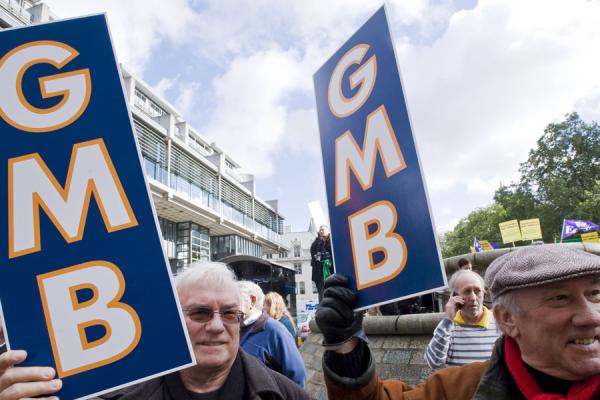2 areas in Dorset and Wiltshire have employment rate below UK average

There are 2 local authority areas in Dorset and Wiltshire that have an employment rate below the UK average of 74% according to a new study by GMB Southern of official employment data from the Office for National Statistics.
These are Weymouth and Portland and Poole.
In North Dorset, 84% of the population aged 16-64 are in employment. This is the highest in the region. The next 5 are Wiltshire with 81.2%, Swindon with 80.4%, West Dorset with 80.2%, Purbeck with 79.8% and East Dorset with 79.3%.
By contrast the lowest are Weymouth and Portland with only 59.8% of those aged 16-64 in employment, Poole with 73.3%, Christchurch with 76.8% and Bournemouth with 77%.
The South West employment rate is 77.6% and the overall UK figure is 74%. The region is the second highest employment rate in the UK behind the South East at 77.7%.
The table below shows Employment numbers and rates for those aged 16-64 by Local authority and unitary authority areas in Dorset and Wiltshire, ranked by employment rate compiled by GMB Southern region, see notes to editors for sources and definitions.
| Annual Population Survey – April 2016-March 2017 | |||
| Employment rate – aged 16-64 | |||
| number | % | ||
| England | 25,725,800 | 74.4 | |
| Great Britain | 29,589,700 | 74.2 | |
| United Kingdom | 30,395,200 | 74 | |
| South West | 2,564,600 | 77.6 | |
| rank | |||
| 1 | North Dorset | 32,800 | 84 |
| 2 | Wiltshire | 234,200 | 81.2 |
| 3 | Swindon | 112,900 | 80.4 |
| 4 | West Dorset | 42,500 | 80.2 |
| 5 | Purbeck | 21,100 | 79.8 |
| 6 | East Dorset | 37,500 | 79.3 |
| 7 | Bournemouth | 99,300 | 77 |
| 8 | Christchurch | 21,100 | 76.8 |
| 9 | Poole | 66,100 | 73.3 |
| 10 | Weymouth and Portland | 22,300 | 59.8 |
Paul Maloney, GMB Southern Regional Secretary, said, “Two areas of the economy in Dorset and Wiltshire need to be thoroughly regenerated to bring to the areas new well-paid jobs.
“This regeneration should be part of a much needed wider regeneration in the regions of the UK. This will not happen by accident and requires a partnership between local and national government and between public and private sectors. This should be part of a new regional policy that should be given priority in the post Brexit economy.
“The people of the less prosperous areas have to demand that all elected political office holders in the area campaign for action from national and local government to lead the regeneration of the area to end the days of these areas being at the bottom of the UK employment rate league.
“GMB call on all political parties to lead the campaign for the gap between the areas with low employment rates and other parts of the country, including the parts of London with high employment rates, to be closed.
“GMB will also seek to end the two tier workforce in the public sector so that contractor’s workers get the same terms and conditions as directly employed staff.
“Action is also needed to increase the bargaining power of lower paid workers. Employers threats and actions, like the recent sacking of shop stewards at Cineworld in London in the course of strike action on pay, is curtailing the rights of workers to join trades unions and to seek collective bargaining agreement to resist and reverse this transfer of income from labour to capital.
“This hostility is widespread and enjoys effective impunity. It is a major cause of growing inequality in the UK.
“So employers hostility is not only abusing the human rights of workers to join trades unions to hold down pay in favour of profits but it now also threatens consumer spending and increases the risk of a further recession. Dealing with this lack of bargaining power has to be part of the regeneration of the low employment rates in the less prosperous areas of the UK.
“When Britain leaves the EU a new regional policy is absolutely essential to lift economic growth and prosperity in every part of the region.”
Contact: Paul Maloney 07901343839; Michelle Gordon on 07866 369259 or GMB Southern Office on 020 8397 8881
Notes to editors:
1) Source: Annual Population Survey from the Office for National Statistics, April 2016-March 2017. The Annual Population Survey is residence based and a continuous household survey covering the UK.
The data is for the employment numbers and rate of those aged 16-64.
Employment measures the number of people in work consisting of employees, self-employed people, unpaid family workers (those working in a family business not receiving a formal wage but benefit from profits of that business) and people on government-supported training and employment programmes (only those engaging in any form of work, work experience or work-related training who are not included in the employees or self-employed series).
The APS is the source recommended for employment-related statistics, such as estimates of the number of people in employment or unemployed.



